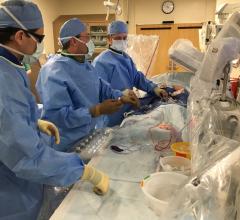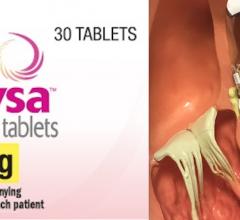
The Xprecia Stride Coagulation Analyzer delivers fast, reliable prothrombin time/international normalized ratio (PT/INR) testing for point-of-care monitoring and management of oral anticoagulation therapy with warfarin, a vitamin K antagonist. It is the latest INR testing system to enter the market in late 2016. Read the article “Siemens Receives FDA Clearance of Xprecia Stride Coagulation Analyzer.”
Point of care testing devices are gaining widespread approval for prompt medical diagnoses, especially in cardiology and INR testing.
Healthcare expenditures of each country are mounting and nations are leaving no stone unturned in providing the best and advanced medical facilities to its populace. The prevalence of chronic and infectious diseases among the millennials has intensified and given rise to the need for better diagnostic methods. The point of care diagnostics (POC) has come to the rescue by proving its convenience in immediate testing and diagnosis of diseases. The popularity of these devices has contributed to a flourishing market. The major factor pushing ahead the POC diagnostics industry is the rise in health awareness spread by government entities.
The increase in the number of heart disorders and trauma injuries across the world are in need of diagnostic devices that can aid in prognosis. The clinically unmet need for cardiac testing devices as well as those medical devices that can monitor blood clotting are giving a real push to the point of care diagnostics industry. Both the categories are significant consumers of the market, and their demand is augmenting the growth of the market. According to the healthcare industy analyst firm Allied Market Research, the global POC diagnostics market is set to reach a market value of $43,336 million by 2022. This is a testimony to the immense potential possessed by the industry in diagnostics.
Cardiac POC Devices Ensure Better Heart Health
An alarming statistic revealed by the American Heart Association states that cardiac diseases account for close to 17.3 million death per year. The figure points towards the clinically unmet needs for timely diagnosis of craniological disorders. Essentially, the cardiac point-of-care testing in hospitals and homes as well leads to a better administering of patient care, by replacing centralized testing methods which are time-consuming. Cardiac biomarker testing devices for monitoring the heart rate, inflammation threats, and potential heart failure can potentially avert complications and even cardiac arrests.
Immediate diagnosis of heart complications can significantly reduce the time a patient spends in the hospital. Devices that can be used at homes can also for timely diagnosis in case of any cardiac emergency. A large number of key players in the POC industry are striving to cater to the demand for more effective and time-efficient cardiac devices. For instance, Philips recently launched the Minicare I-20 troponin blood test, which can aid doctors in ruling out a myocardial infarction in just 10 minutes of testing. By testing a single drop of blood, the doctors can quickly decide which casualty patient can be discharged quickly.
“Blood samples are usually analyzed in the hospital laboratory, which can easily take more than an hour to get the result back to the emergency physician," said Dr. Paul Collinson, consultant chemical pathologist at St George’s University Hospitals NHS Foundation Trust in London. "Point-of-care testing can significantly help to reduce the turnaround time.” Such advancements could offer considerable help in cardiac diagnostics.
Established Demand for INR Testing Devices
The demand for INR testing devices is largely propelled by the sheer number of road accidents and trauma injuries. The monitoring of blood clotting and coagulation levels of the wounded is an essential part of any medical procedure. It is evident that the sale of such devices that keep a tab on the prothrombin timing or the effects of warfarin is going to drive the market ahead. INR testing devices already have a prominent and established demand in the point-of-care diagnostics market for patients on warfarin therapy, which has a very narrow therapuetic window and can require regular dose adjustments.
The competitive landscape of the industry is extremely promising. A large number of top players enact different strategies and look to expand their product offerings in different segments. Companies, such as Siemens, Johnson & Johnson, Nova Biomedical, Abbott, and F. Hoffmann-La Roche Ltd. are investing heavily in different R&D projects for the development of more effective diagnostic devices. These strategies will ensure a dynamic competition in the market and promise major potential for growth in various regions of the world. By overcoming the hassles of traditional laboratory testing, point of care diagnostic devices have emerged as time-saving and efficient alternatives for delivering better patient outcomes,
Editor's note: The author Ravi Chawat is an analyst with Allied Market Research. For more information www.alliedmarketresearch.com/point-of-care-diagnostics-market


 August 28, 2023
August 28, 2023 








